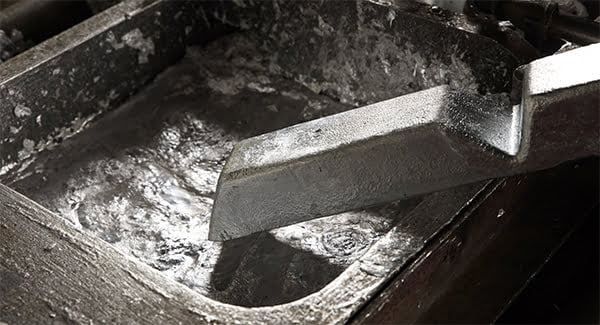
The diecasting process begins by creating a mold, also known as a "die," which is constructed from steel that has been hardened to withstand high pressures and temperatures. When the mold is ready, metal alloys such as aluminum, zinc, magnesium, or copper are heated until they are melted. The molten metal then gets in the die under extreme pressure. This ensures that it fills all parts of the mold. This includes intricate sections and walls that are thin. This pressure will be maintained until the molten metal is solid, when the die is unveiled, and the newly created part will be ejected. This high-pressure method ensures that the product produced is precisely, with minimal need for additional machining or finishing.
One of the most significant benefits of diecasting is its capacity to make parts with outstanding dimensional precision and smooth finishing on surfaces. This is because high-pressure injection makes sure that every element of the mold has been replicated and the result is parts which meet the strictest tolerances and need minimal or no post-production work. This level of precision is particularly beneficial in the creation of complex geometries as well as specific details that may be difficult or impossible to achieve by other techniques of manufacture. Furthermore, the ability to repeat diecasting is ideal for large-scale production, ensuring uniformity across a large number of parts. The effectiveness of this process will also lead to substantial costs savings as it reduces both material waste and costs for labor.
Diecasting has many benefits with regard to physical properties and efficiency. Diecast parts are recognized for their strength and durability, which are essential features for parts used in harsh environments. The formation of fine-grain structures in the process of rapid cooling the metal helps to create the desirable characteristics, which makes diecast components suitable for use for high-stress conditions. Diecasting also allows the inclusion of thin walls and complex features without compromising the integrity of the product. This can be particularly useful when it comes to aerospace and automotive industries, where reducing weight while maintaining structural strength can be crucial to boost energy efficiency and overall efficiency. To acquire more information please click to read

The versatility of diecasting extends to its many applications throughout different industries. For instance, in the automobile industry diecasting components are crucial to the design of engines, transmissions and structural parts. They contribute to the production of lighter, more fuel-efficient vehicles. In the electronic sector the use of diecasting can be used to make heat sinks connectors, and housings to ensure optimal thermal management as well as longevity for electronic devices. The industry of consumer goods has a lot to gain from diecasting, with applications ranging from appliances for the home to power tools and toys. The process's adaptability to various metals, as well as its capacity to create parts that have intricate design make it ideal for various applications, each benefiting from the unique benefits diecasting brings.
Diecasting is an essential manufacturing process that brings together accuracy, precision, and versatility. Its capability to make complex, high-quality components with excellent mechanical properties makes it indispensable in many sectors. The effectiveness of diecasting when it comes to mass production, with its material and price benefits, justifies its significance in manufacturing today. Since the need for high-quality and dependable components continues grow, diecasting will remain an essential technology that drives innovation and enabling the production of products with the latest technology that will meet requirements of the marketplace. Through continuous development and application diecasting illustrates the synergy between engineering excellence and manufacturing expertise, solidifying its importance in the next phase of industrial production.